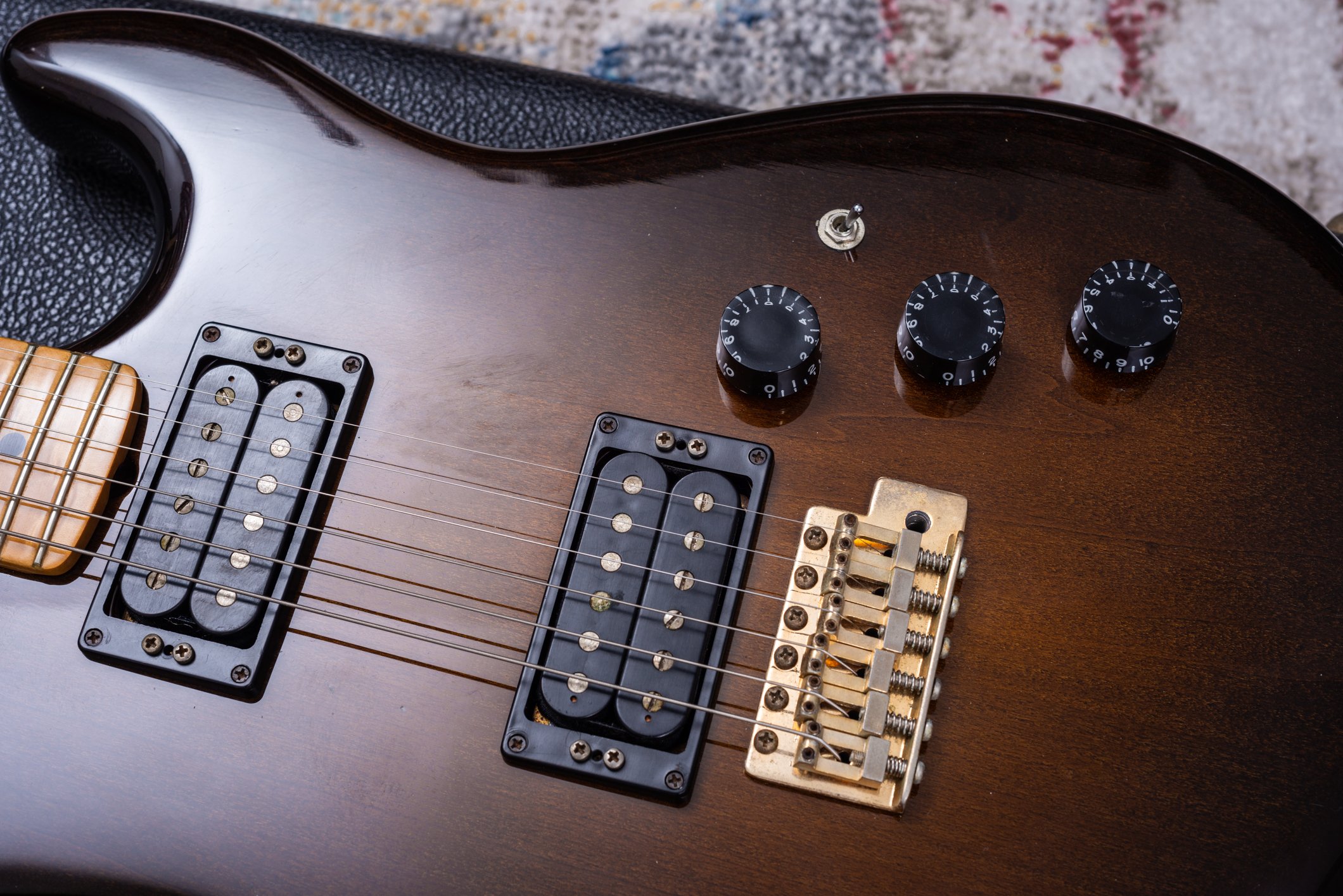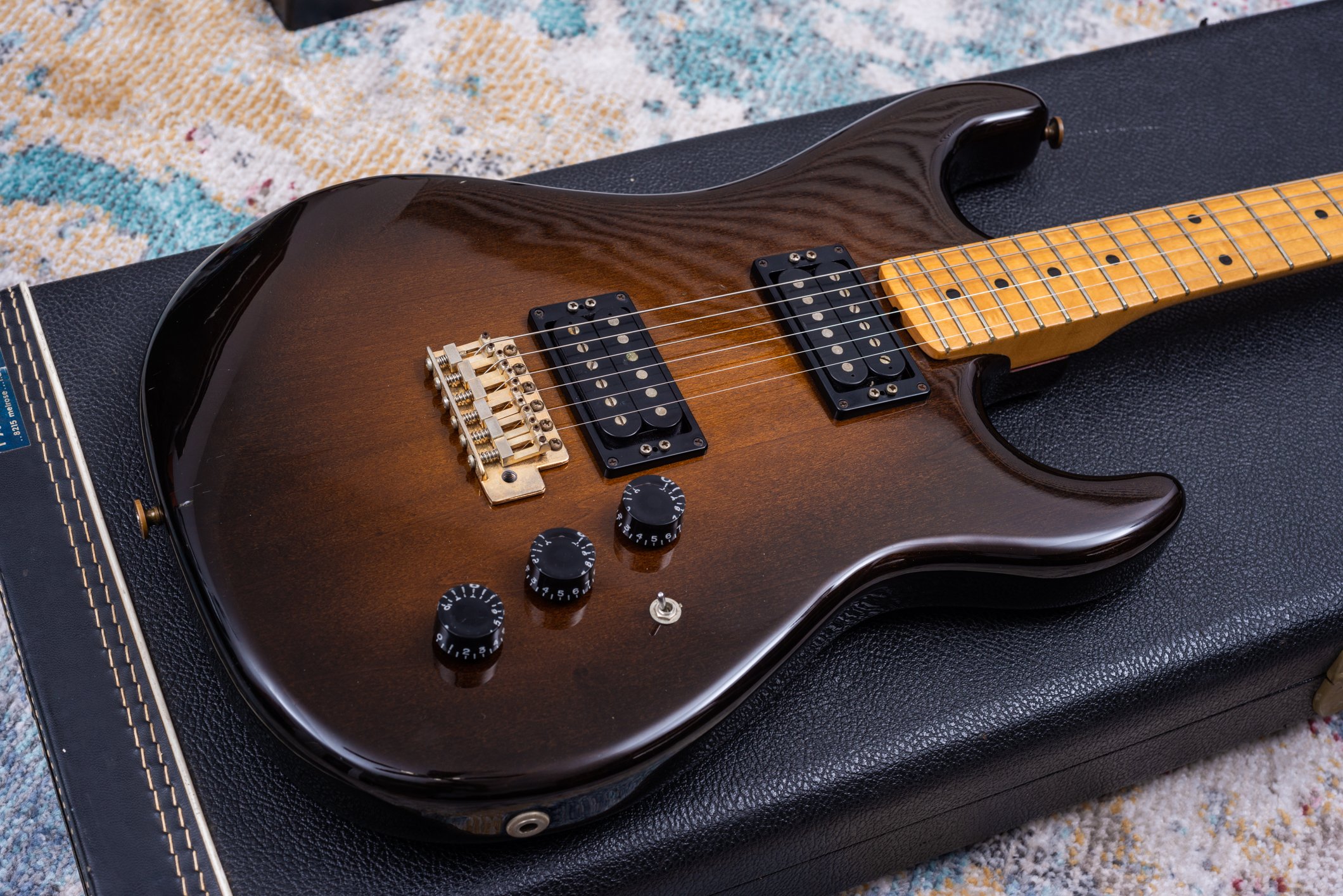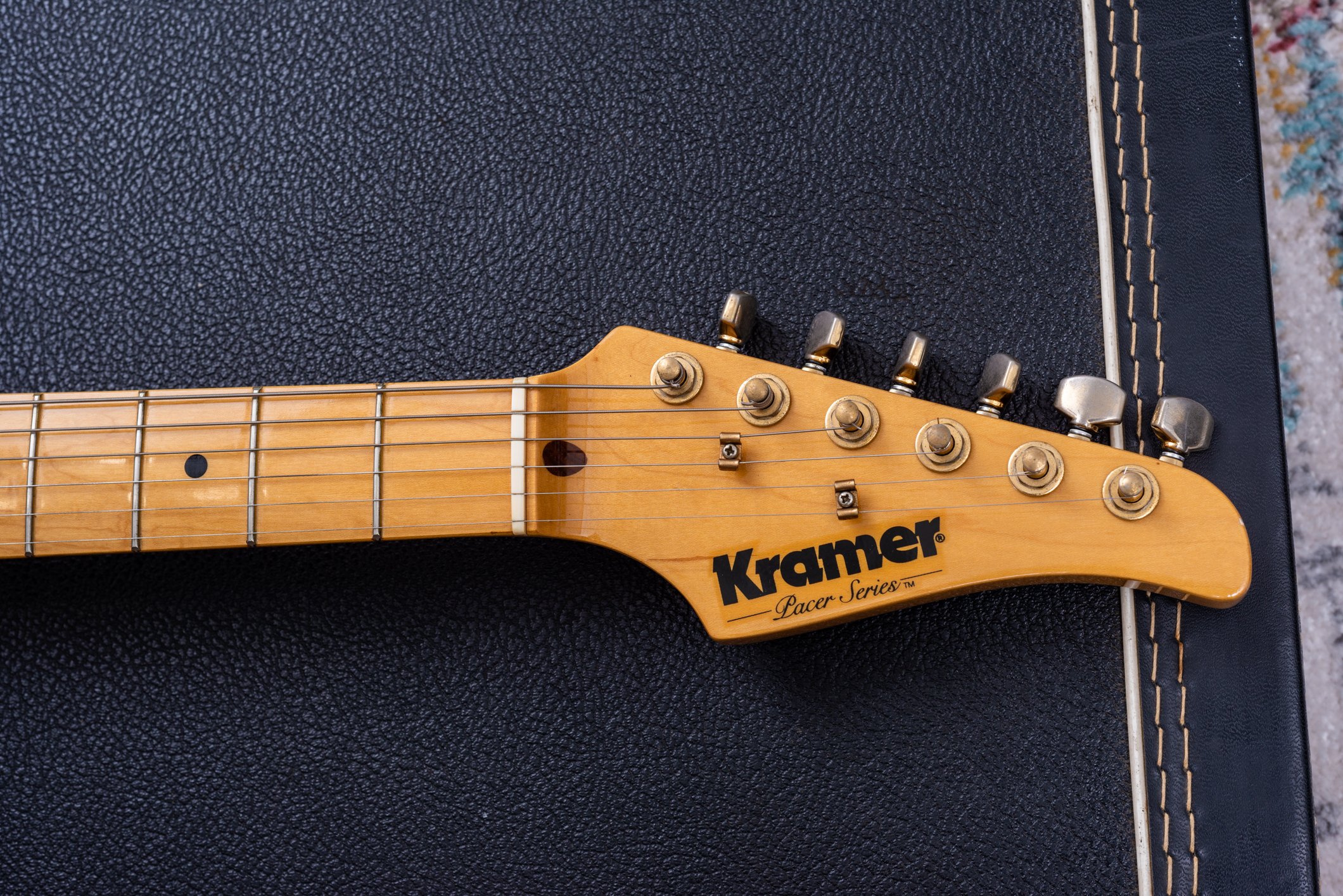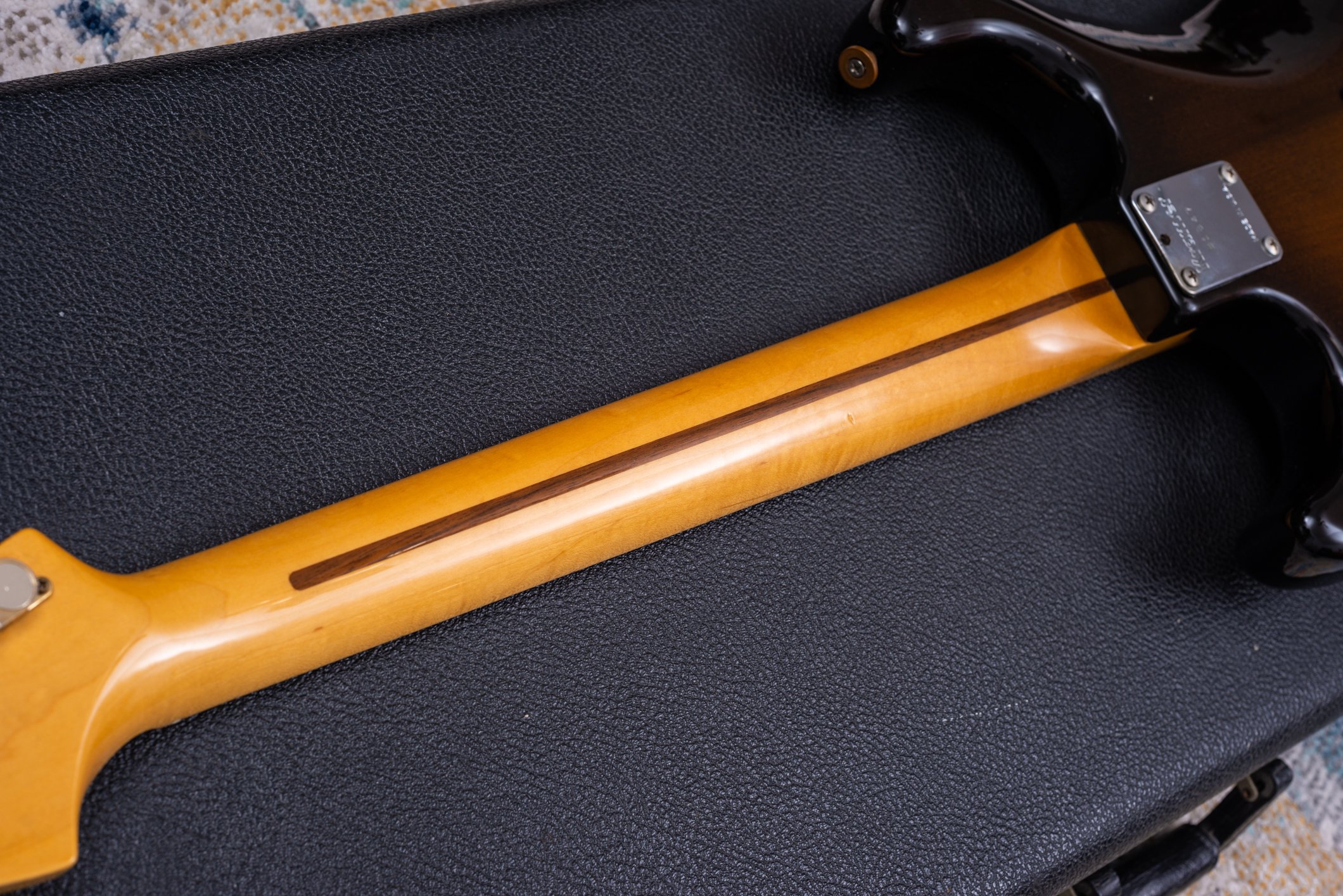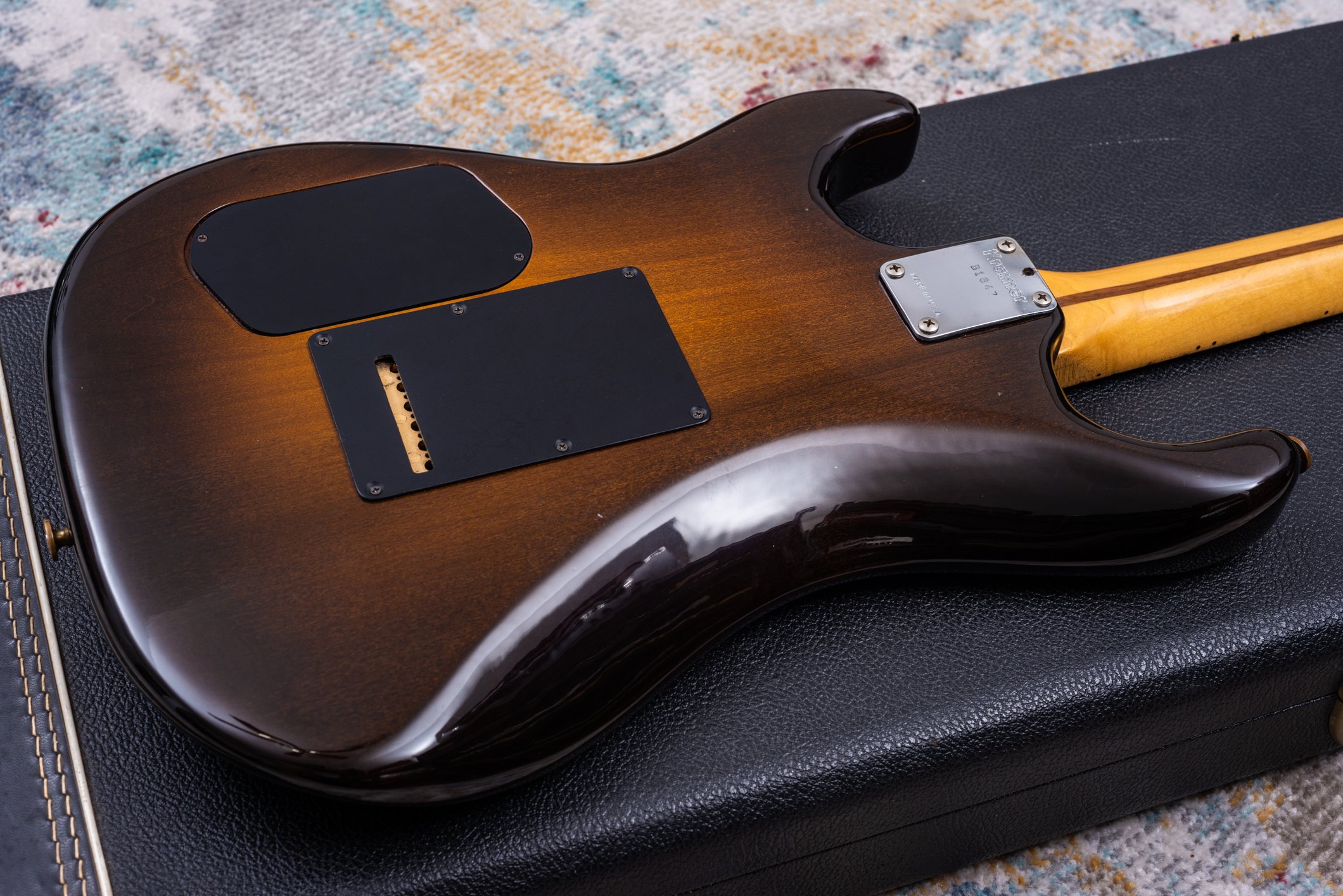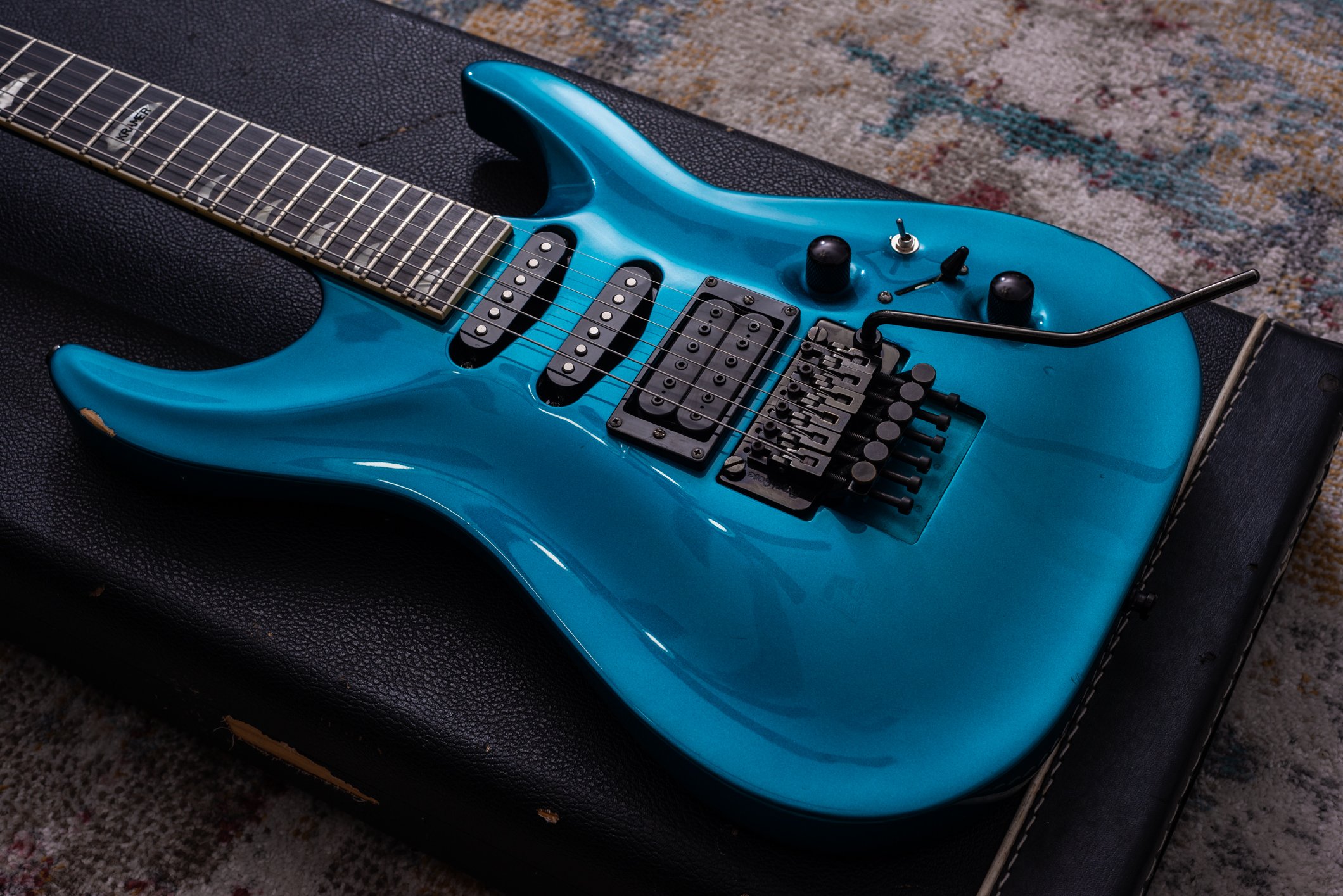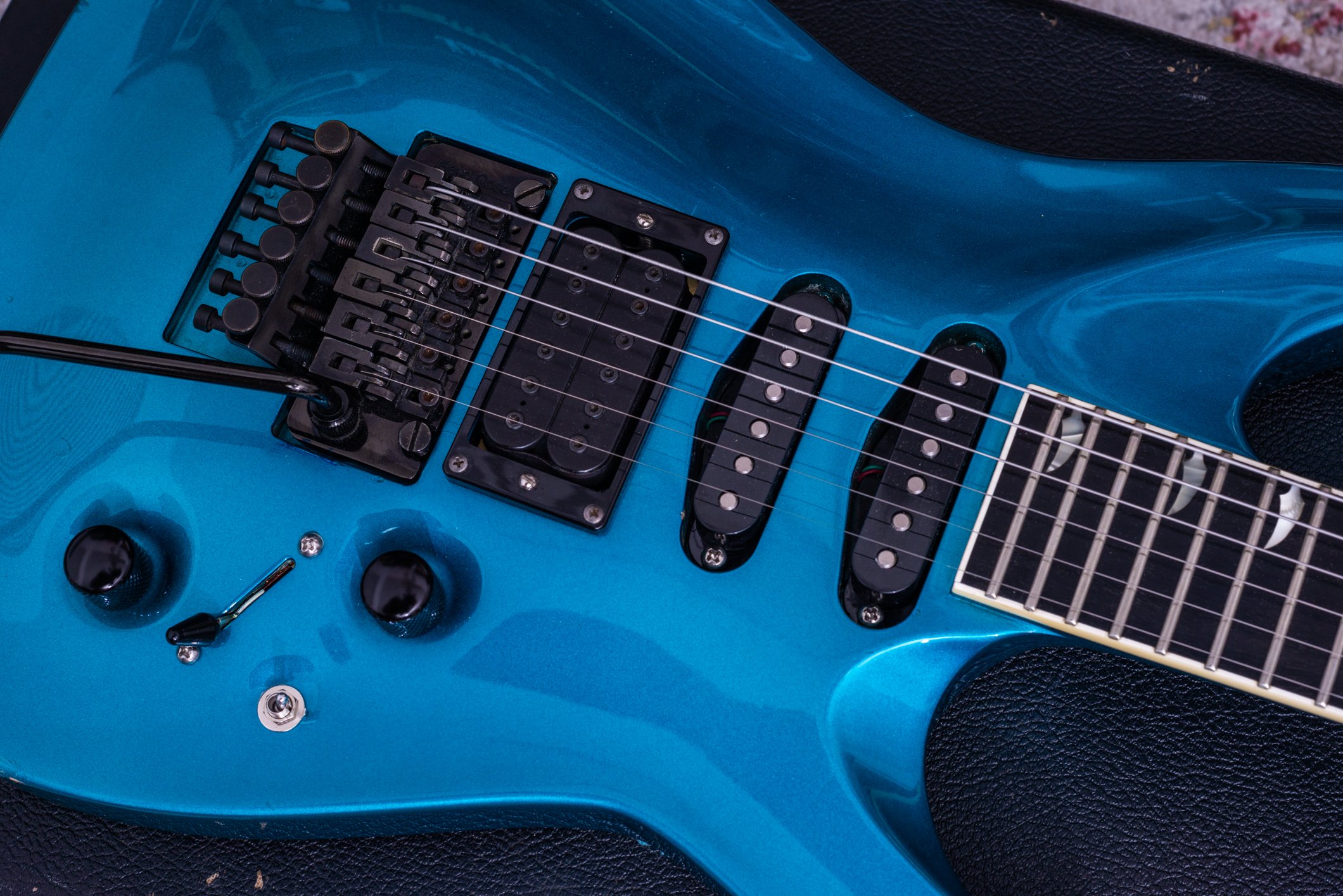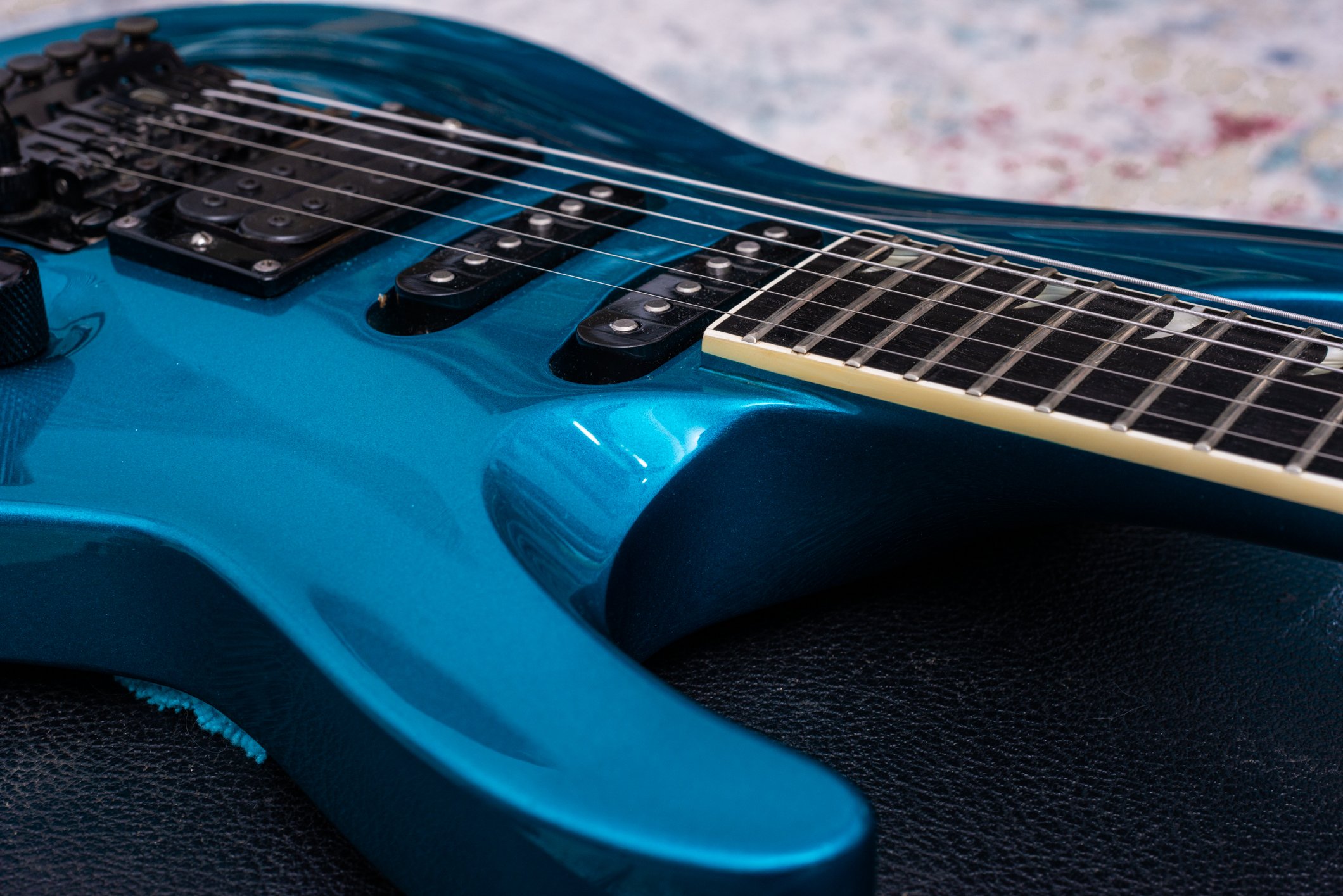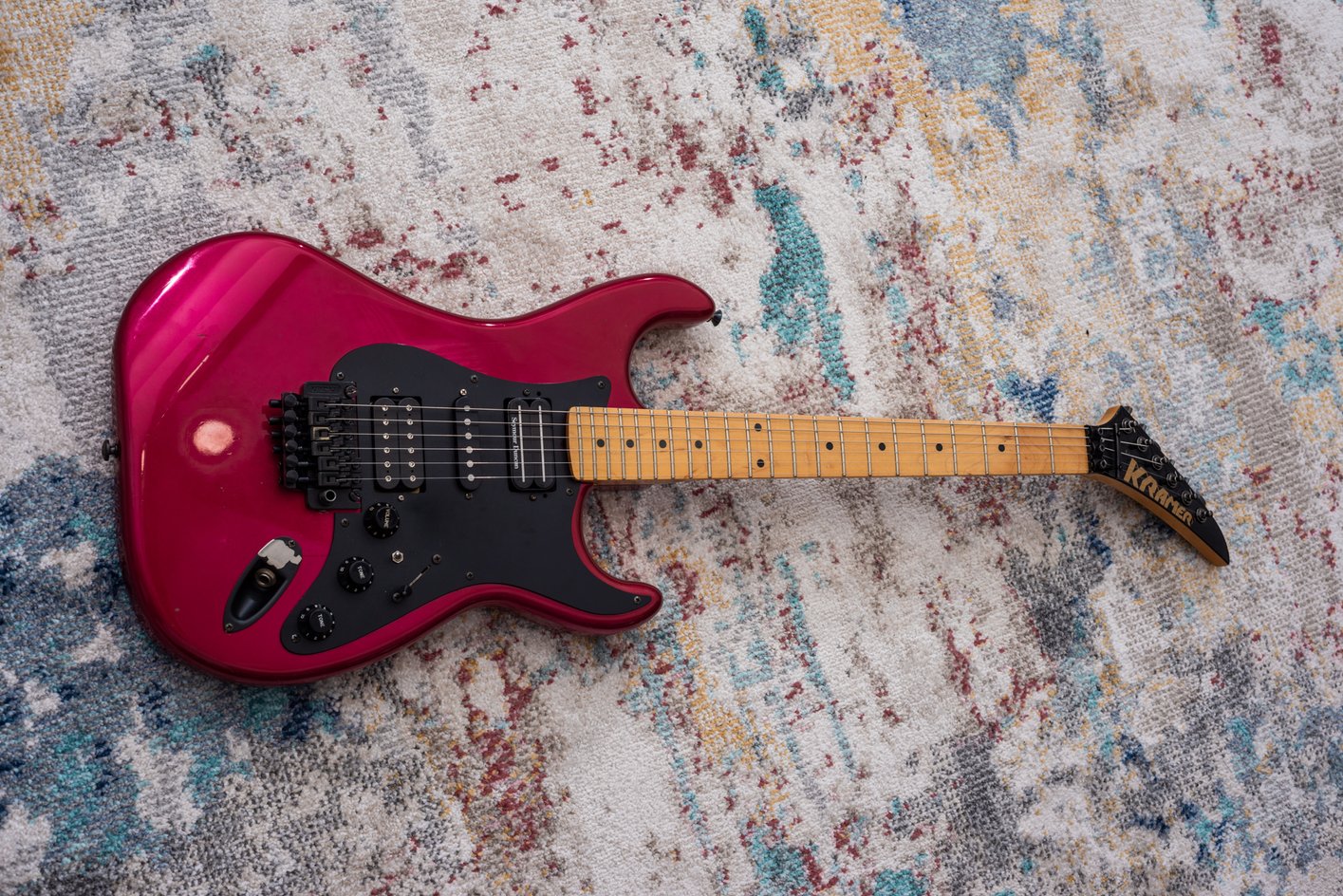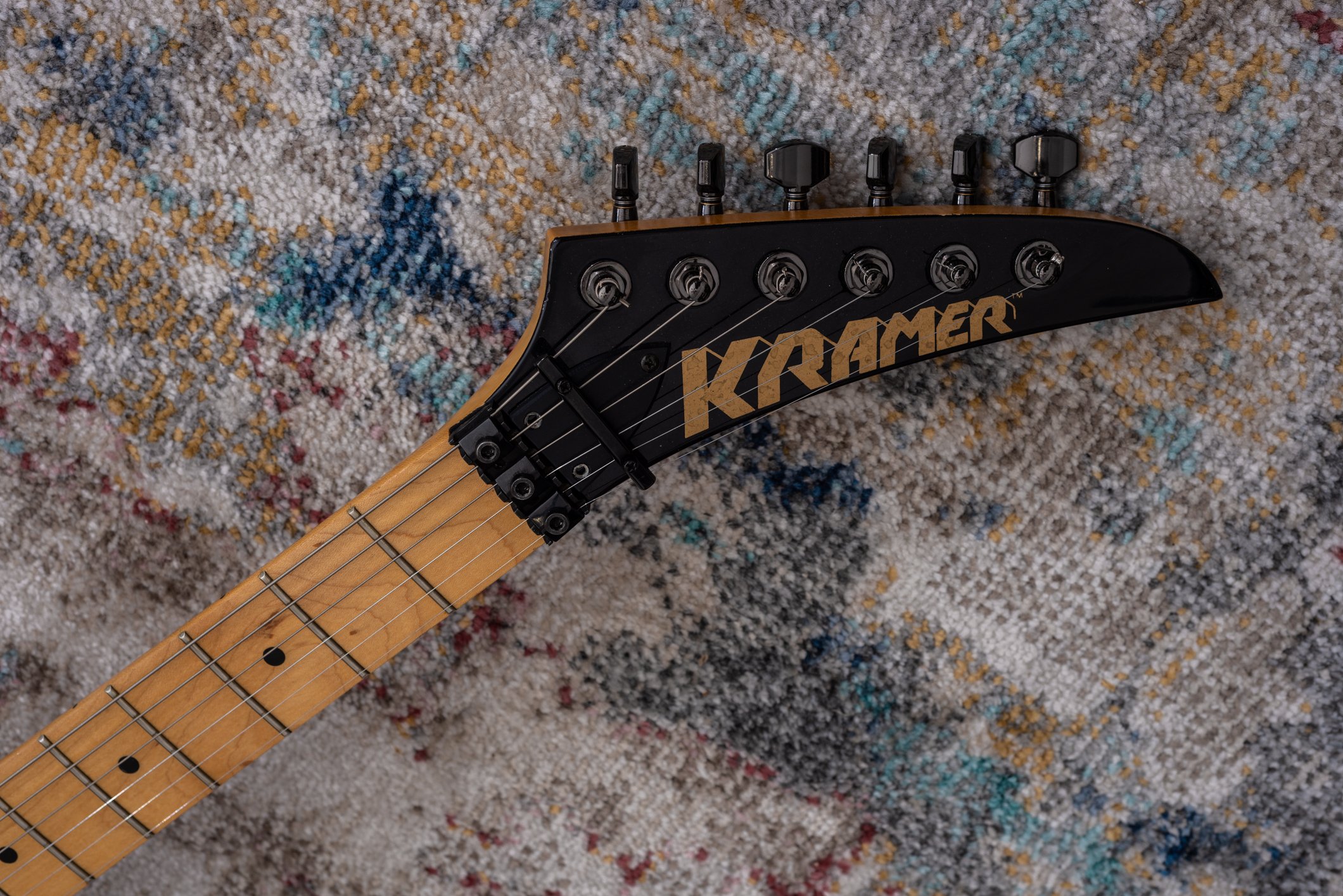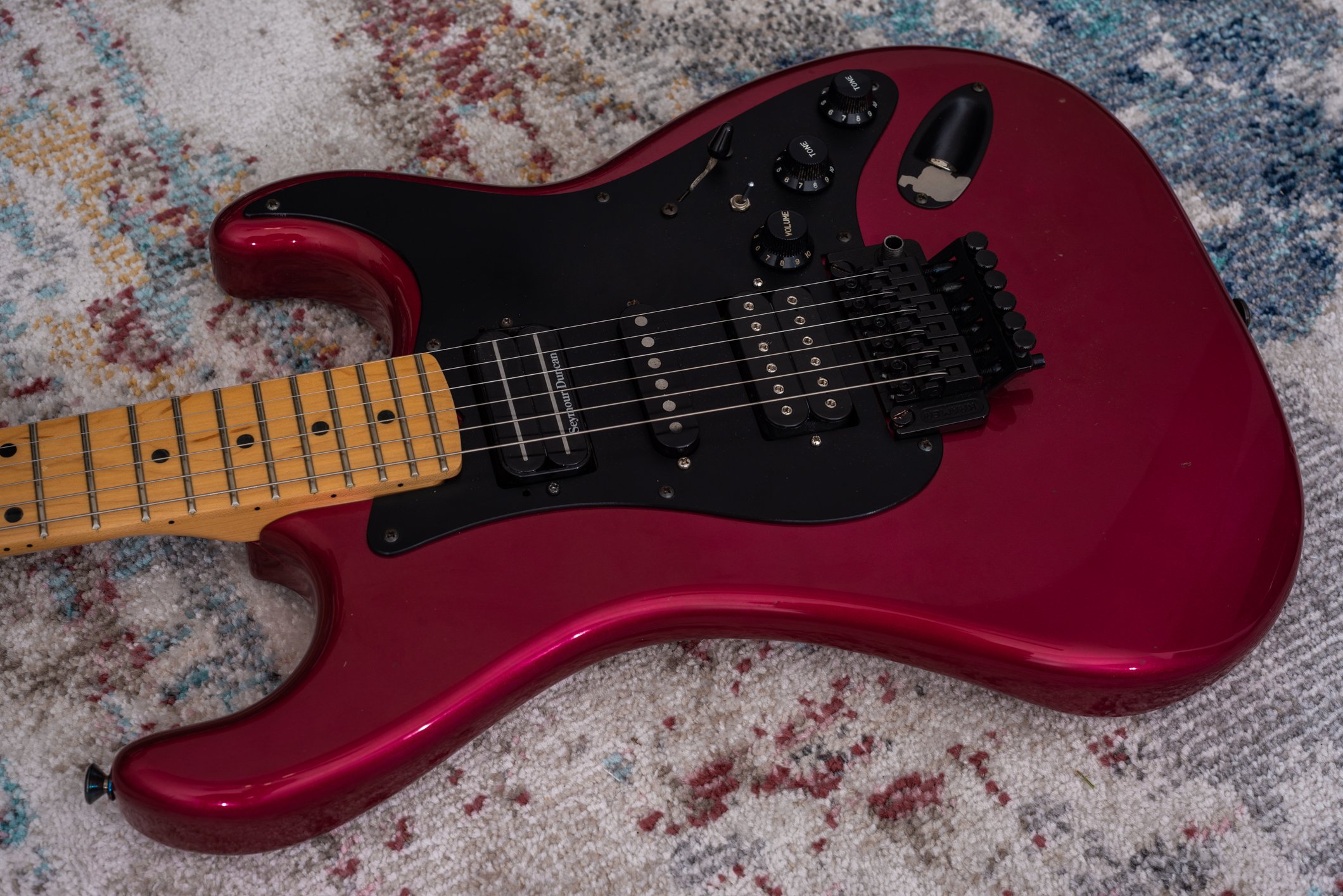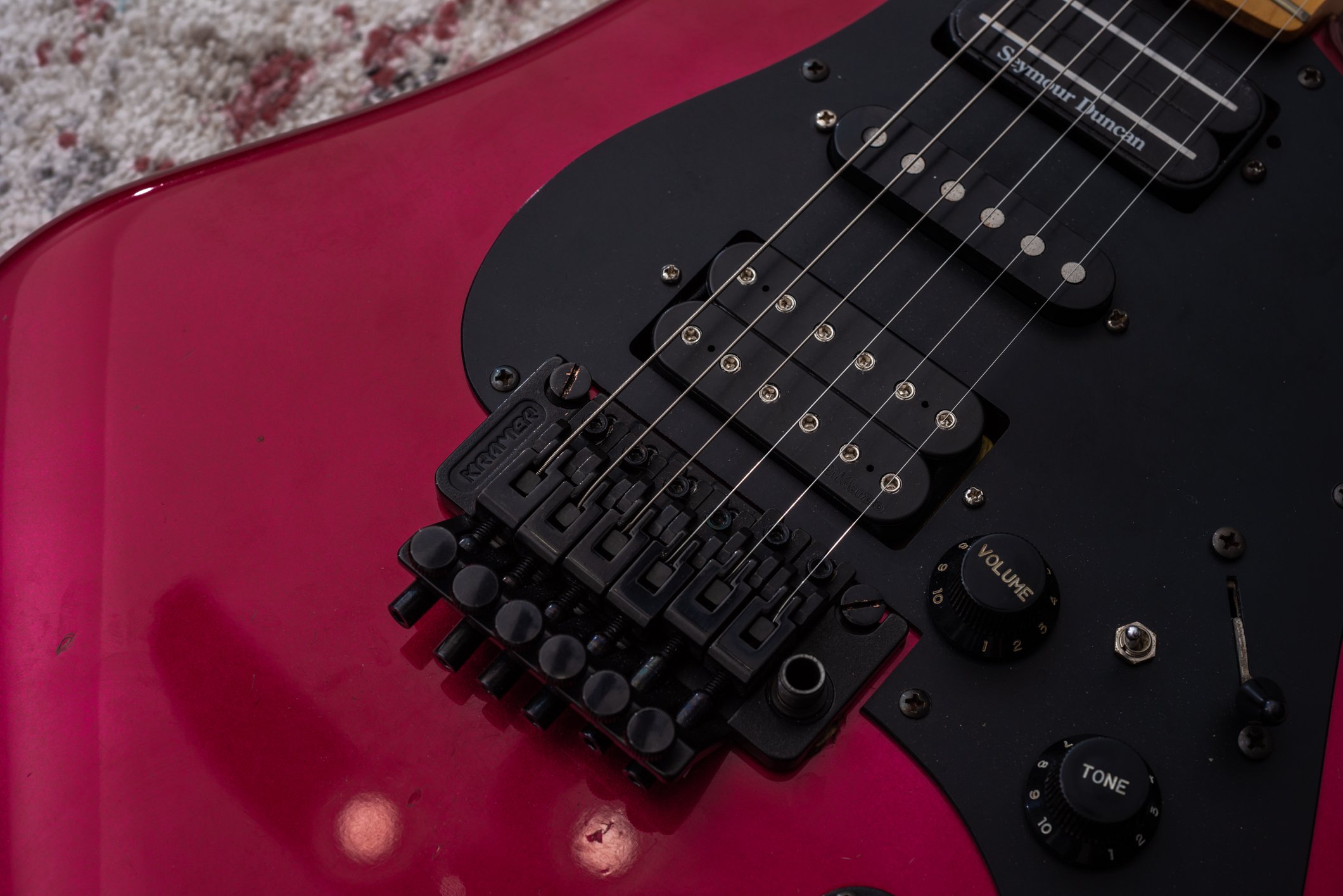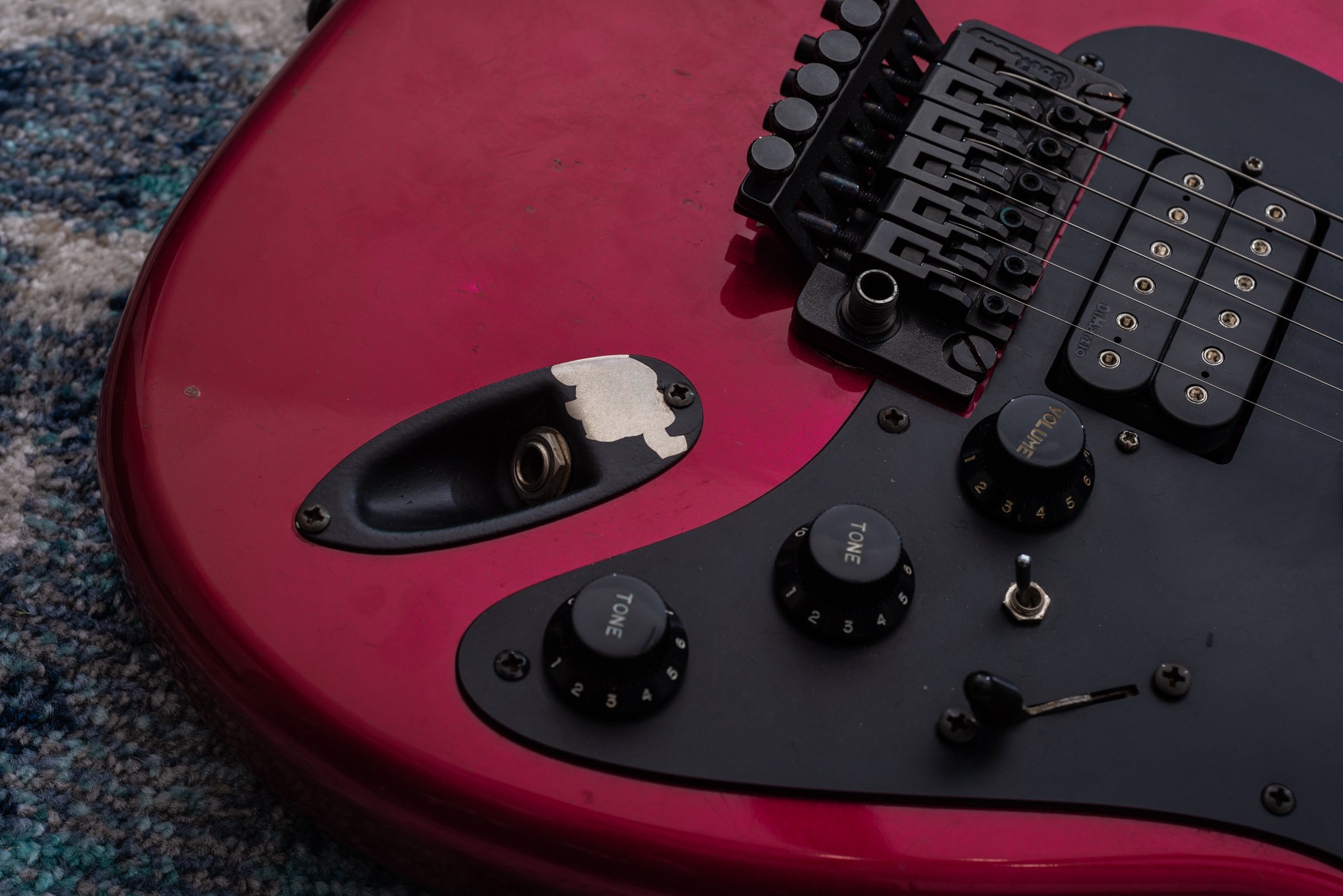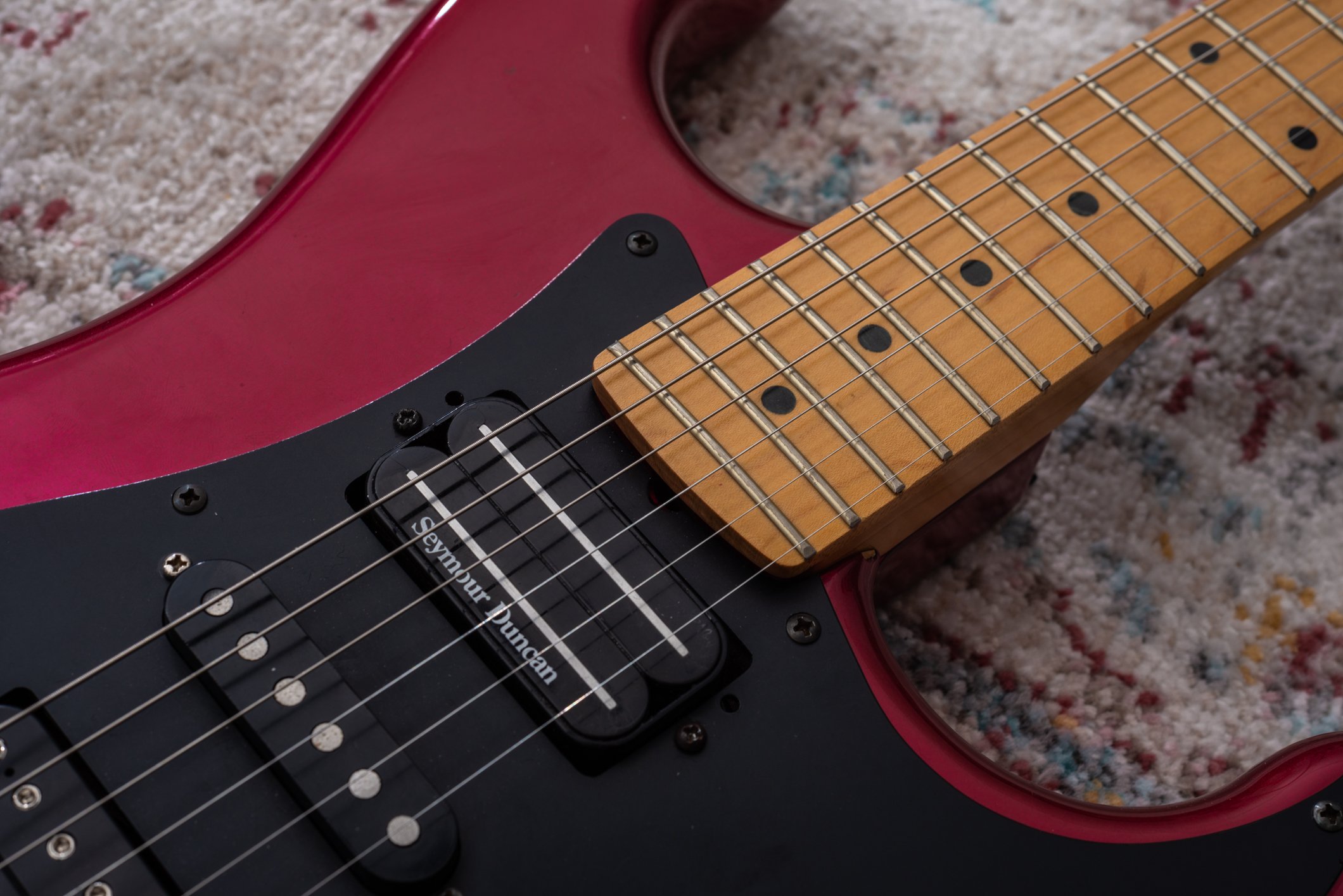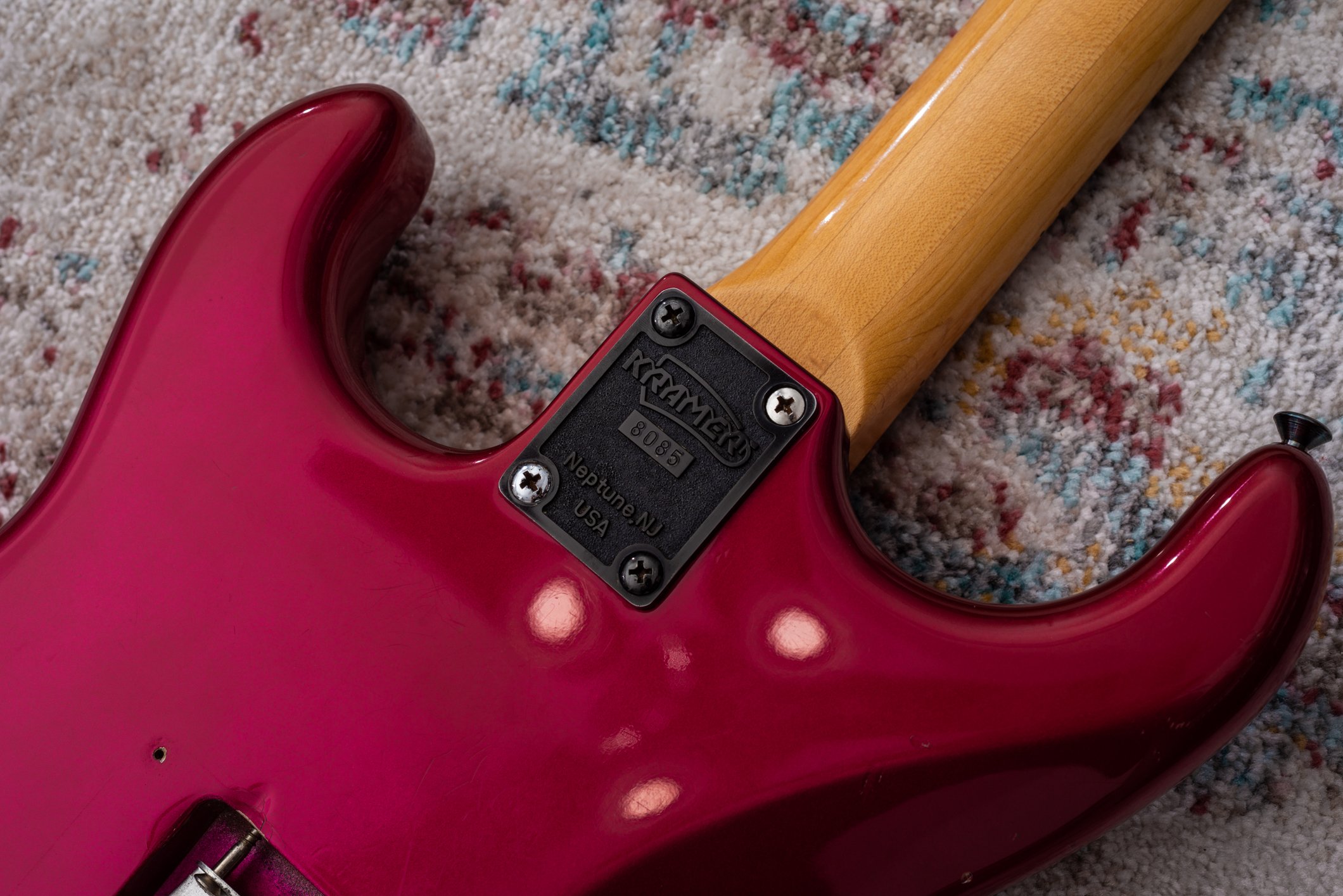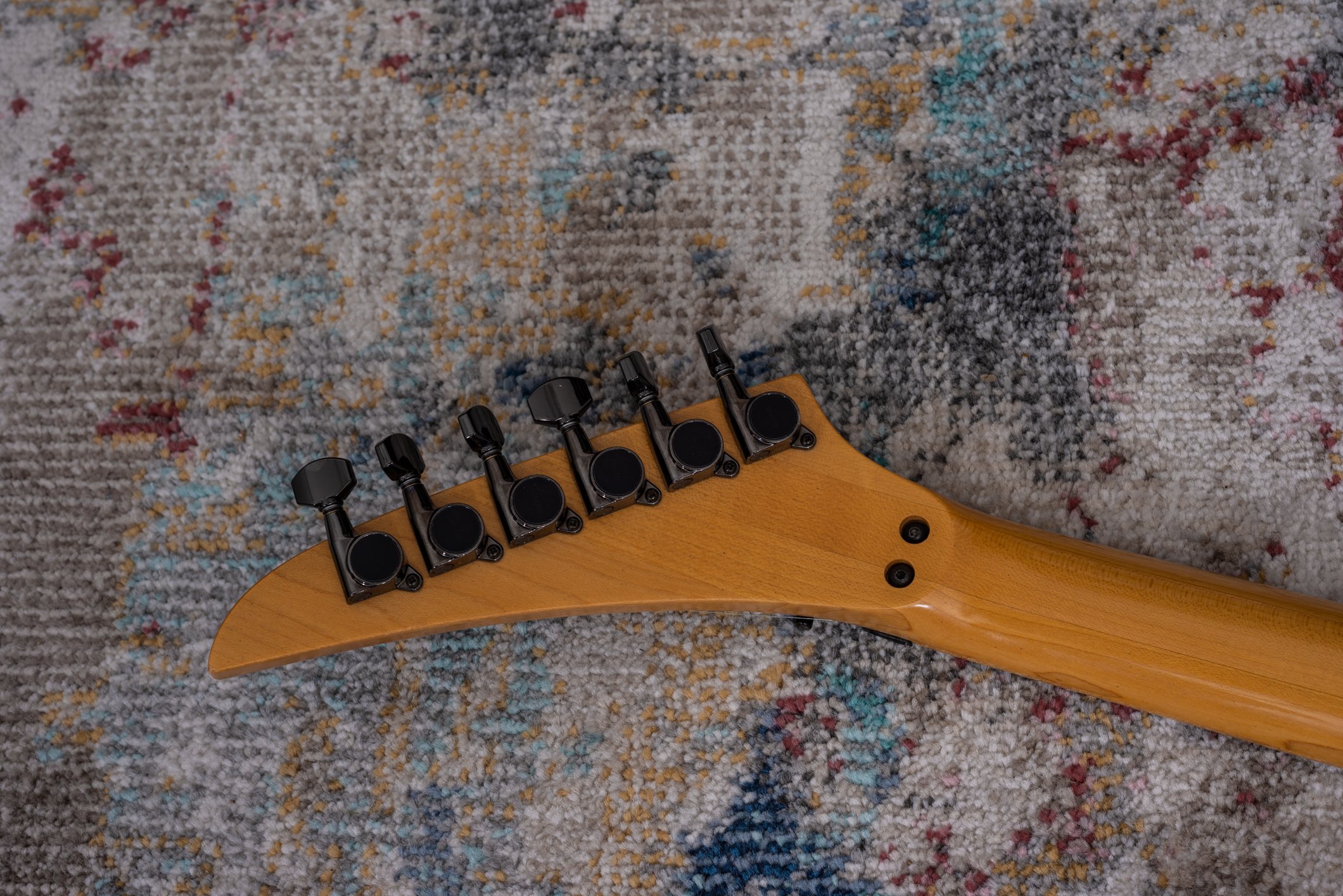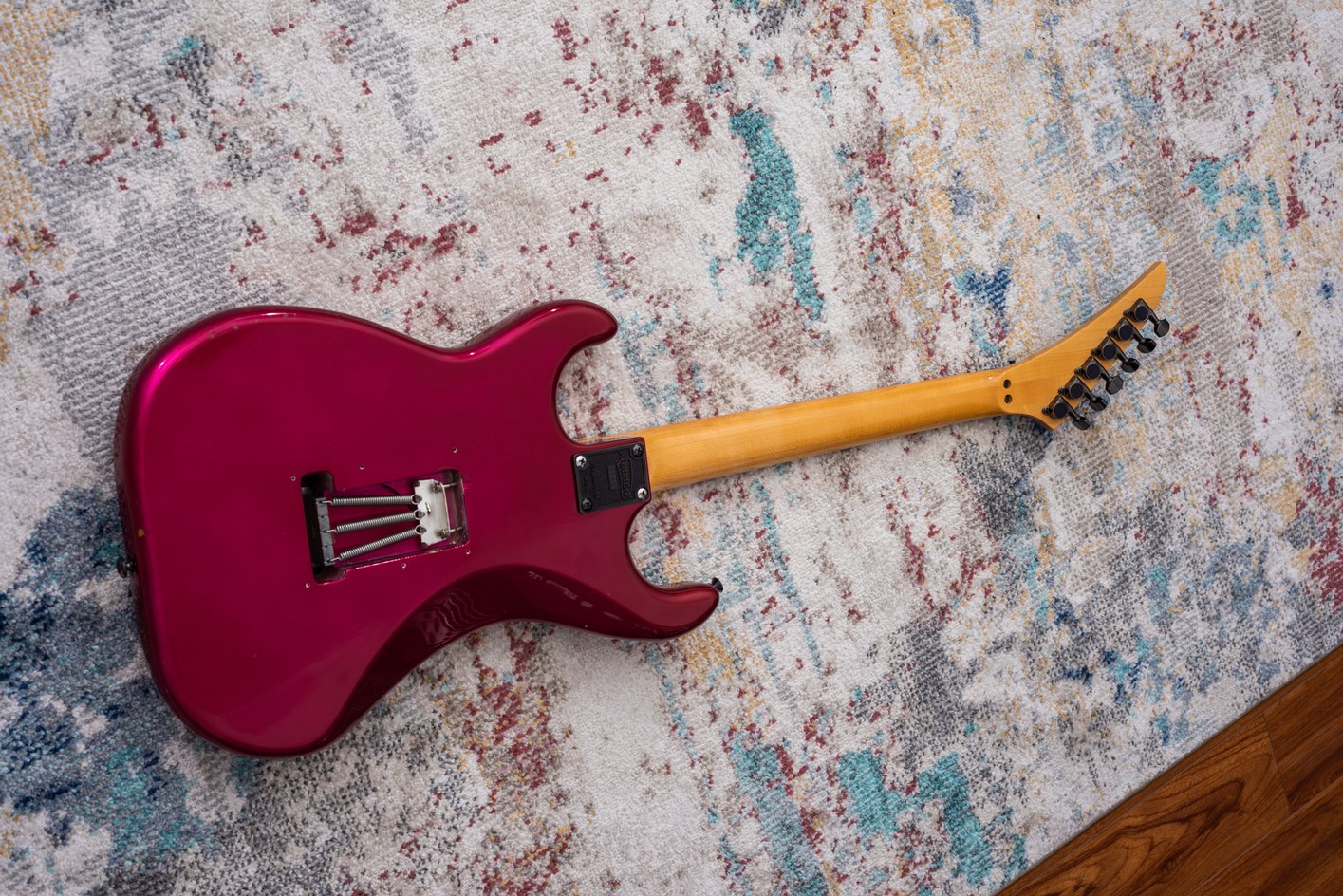You know, it’s tough these days to find good information on Kramer guitars if you aren’t already involved in collecting them. There are really great resources like vintagekramer but with so many parts mutts and sometimes intentionally misleading information (ex. Strikers with “Pacer” truss rod covers), it’s hard to fault people from getting it wrong occasionally.
On the other hand, when a “Kramer Pacer Deluxe Magenta” is listed on Guitar Center’s used listings without a picture, it’s worth the risk sometimes - and many times I’ll buy something like that sight unseen as quickly as possible to get a good deal before someone else snags it. This time though, I had some self control, and even waited until the store opened to call and confirm the guitar’s condition.
Does it say “American” on the headstock? Yes. Maple or Rosewood fretboard? It’s maple! Floyd rose bridge? Yep!
Well imagine my surprise upon unboxing this guitar to find that not only is it not an American neck, but not a Pacer body either. In fact, this is an early Focus body, which is easily identifiable as it has a heel truss rod adjustment notch (and sharp angled lower horn to neck pocket curve) , but it’s paired with a later Thousand series, tilted back headstock. Of course, the headstock also appears to have been re-logoed, or at least re-painted. To make matters worse, the Original Floyd Rose is long gone, replaced with a Musicyo era, low quality Floyd copy, and the input jack plate has been spray painted black (the paint even flakes off at the lightest touch). The serial number plate is also an odd one, a 4 digit Neptune plate with no letter prefix - this likely would’ve been on a Ferrington but possibly a spare or firesale plate too, intended for some other Korean made instrument.
The only positive I suppose, is the pickups - a Seymour Duncan SH-13 Dimebucker and a hex-pole Dimarzio of some kind… I’m not even going to bother checking to see what it is. The body has of course been routed for the neck humbucker, as well as an amateurish cutting of the original black pickguard to fit it. The wiring in positions 2 and 4 is completely out of whack, since the middle single coil appears to be the stock Focus pickup, and whoever threw this together didn’t care enough to check if the wiring was in or out of phase in those positions.
The neck seems almost salvageable, but the frets are worn so low, and leveled, that it’s basically unplayable. The strings have the tell-tale pop of dead frets, and when bending on the high strings between 5-10 or on the low strings anywhere above the 10th fret, the string buzzes then goes dead. Perhaps raising the bridge a little could save it - but nope, the bridge is completely locked in place and can’t be adjusted up or down, or even used to dive somehow.
If I sound a bit frustrated, I apologize. This is the second time in a row I have paid a hair over a grand for a maple fretboard Kramer and had a problem so severe it must be returned. This guitar was listed as a “Vintage” instrument as well, so I only have a 3-day return period on it, but don’t worry, I won’t even own this guitar for more than 24 hours. Here are some pictures of the monstrosity - pretty colors aside, what a disappointment for that price!
